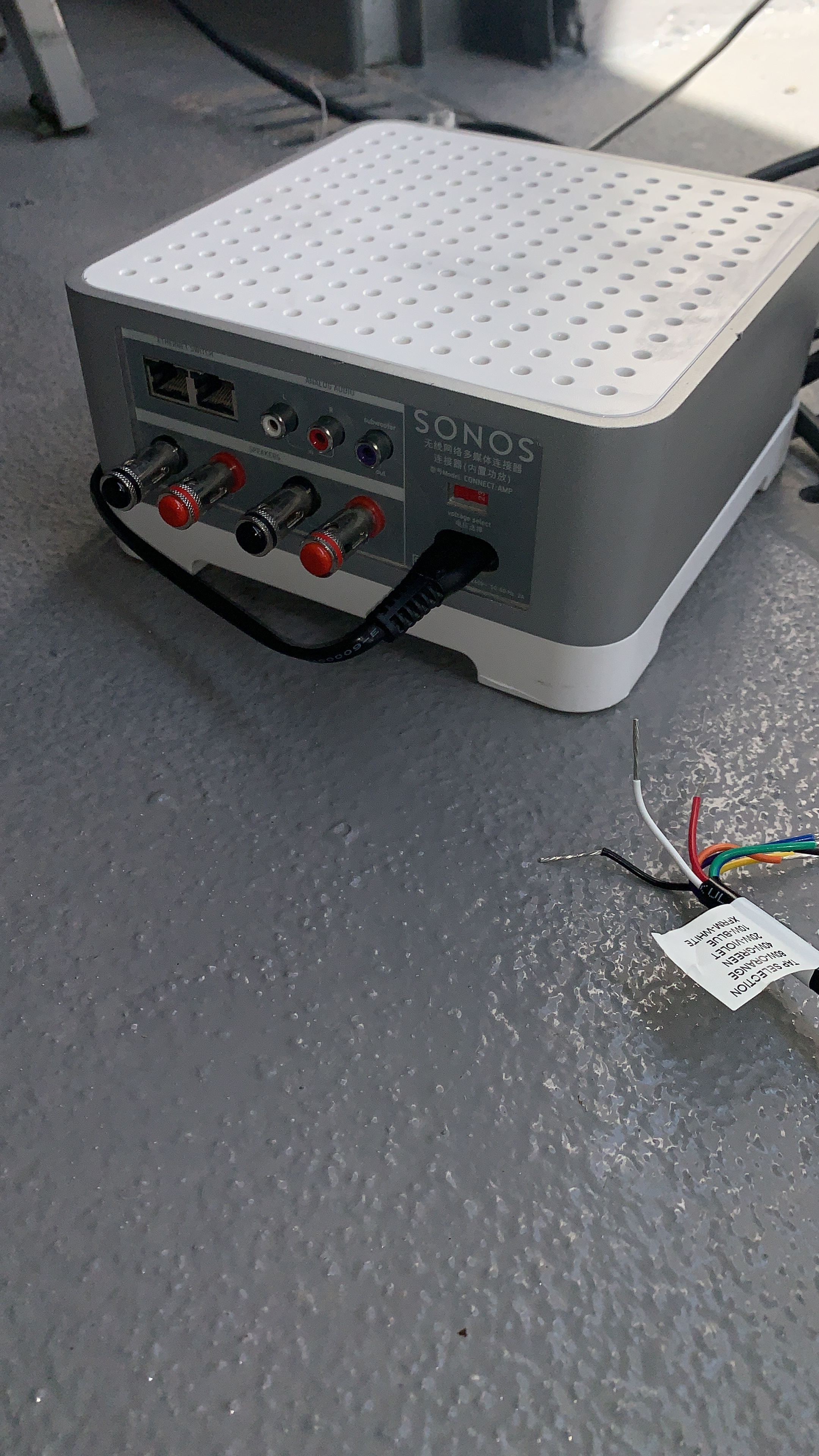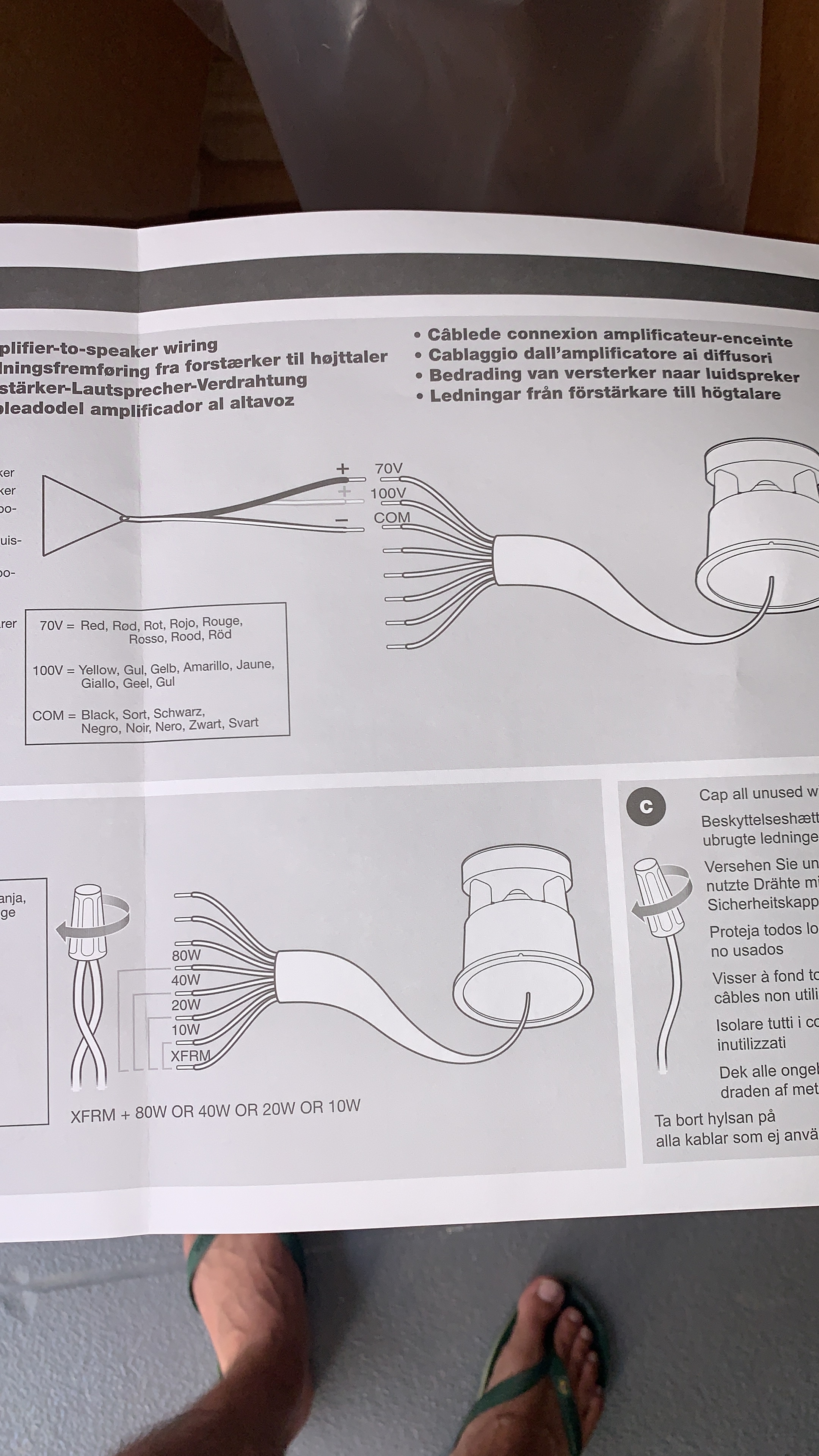That’s atrocious, almost as bad as a Bang & Olufsen “manual”. Yes, you should definitely call Bose. But if you are the adventurous type, you can just hook up the black & white wires to black & red speaker terminals of your Sonos Connect:Amp.
Don’t sue me if it doesn’t work, but here’s the general principle, to help you understand: Your speaker is just a regular speaker -- 4 ohm, I think -- with a transformer bolted to it, but not hooked up. In a pro installation, the transformer gets put between the speaker and the incoming high-voltage signal. Black is COMmon, ground, for both input, output, and one wire of the speaker. 70-volt (or 100-volt) gets put to one coil of the transformer. The other coil of the transformer comes out on multiple wires (taps), one of which you choose to connect to the other wire of the speaker. (Which one you choose is for balancing the system.) Regardless, underneath it all is a speaker across the white and black wires, and a transformer with primary and secondary coils across all the other wires (and black) in some form or other.
P.S. Because the speakers are 4 ohms bare, you can only connect one pair to your Connect:Amp, no doubling-up for more even yard coverage, like you could with 8-ohm speakers. That’s what those 70-volt systems are good for!



